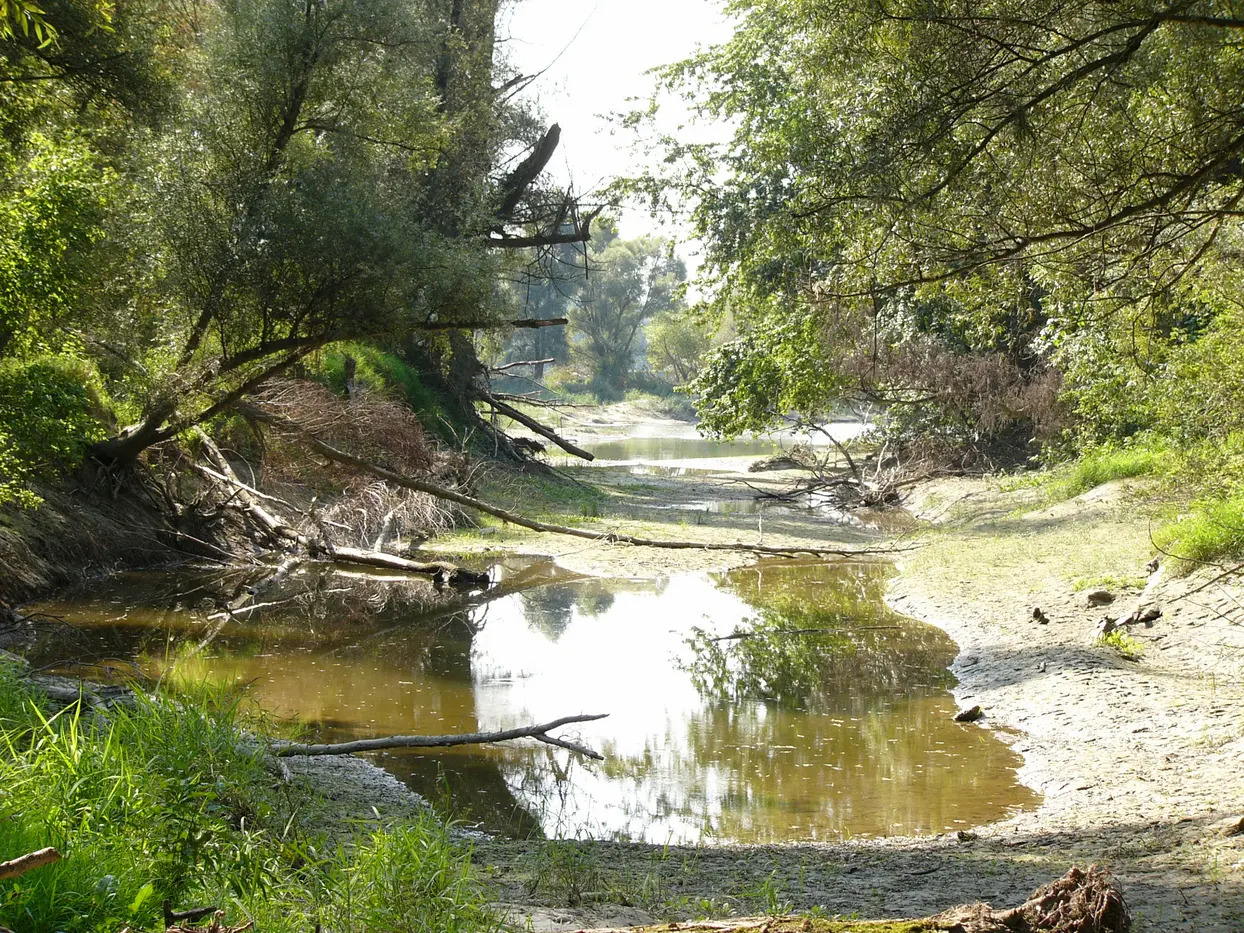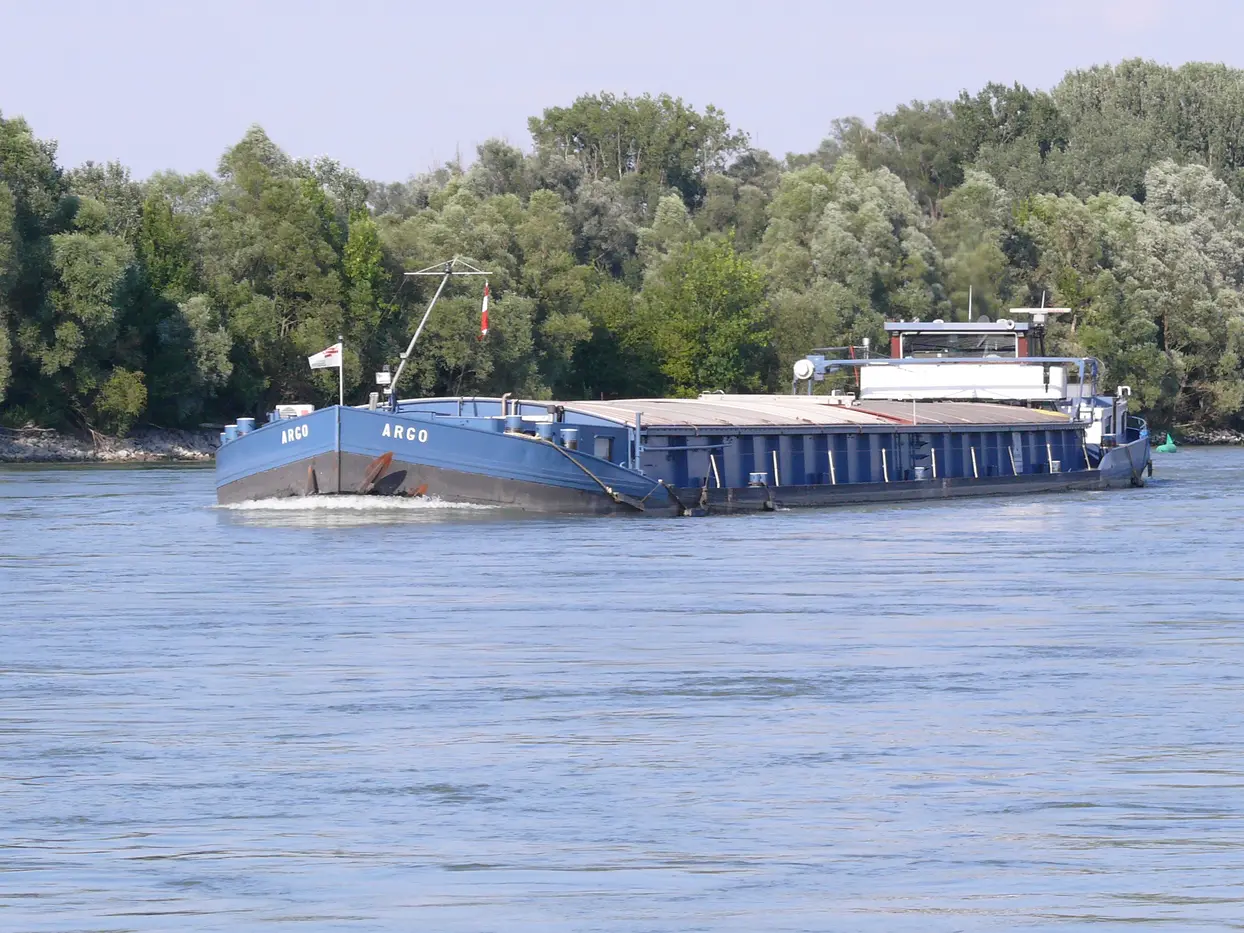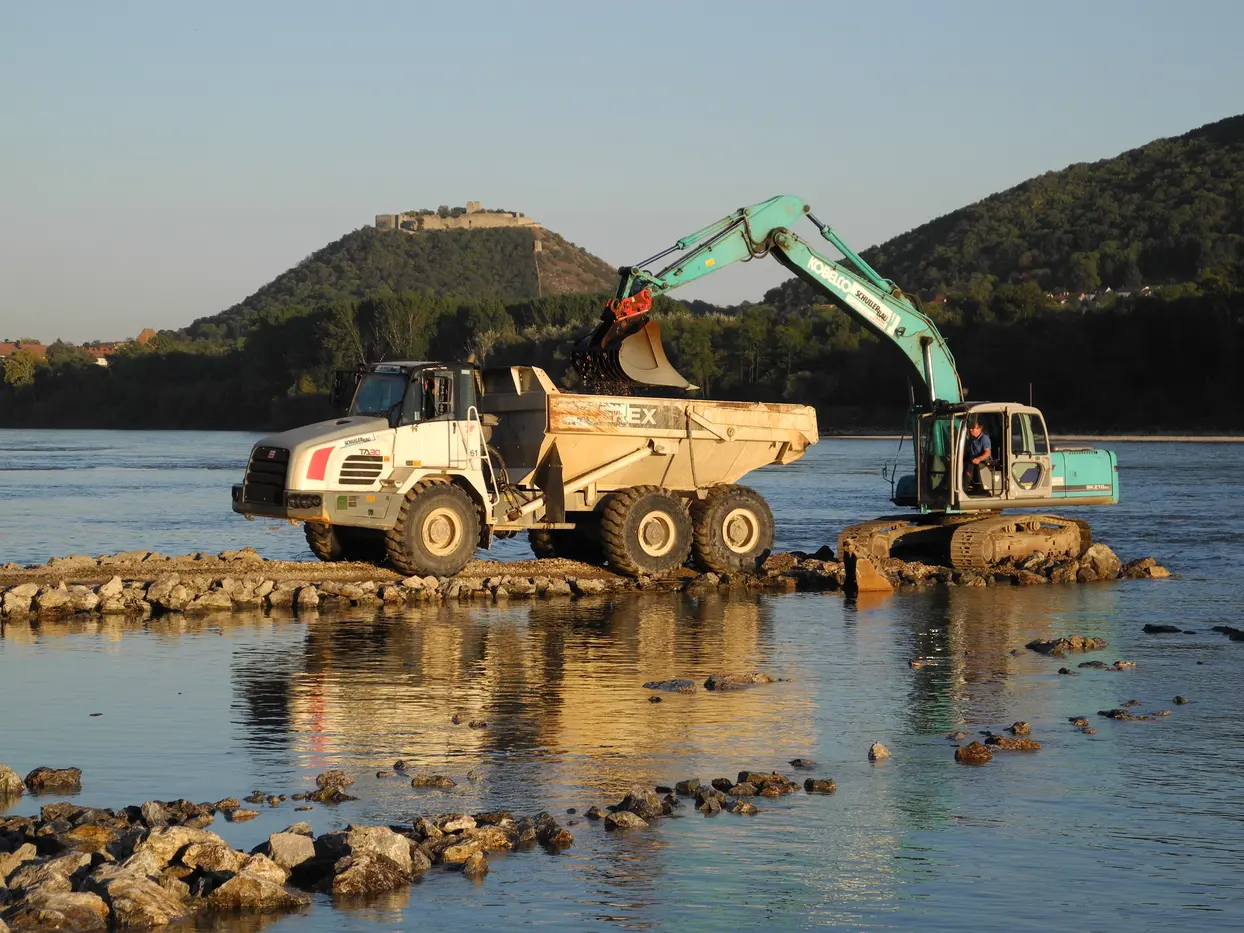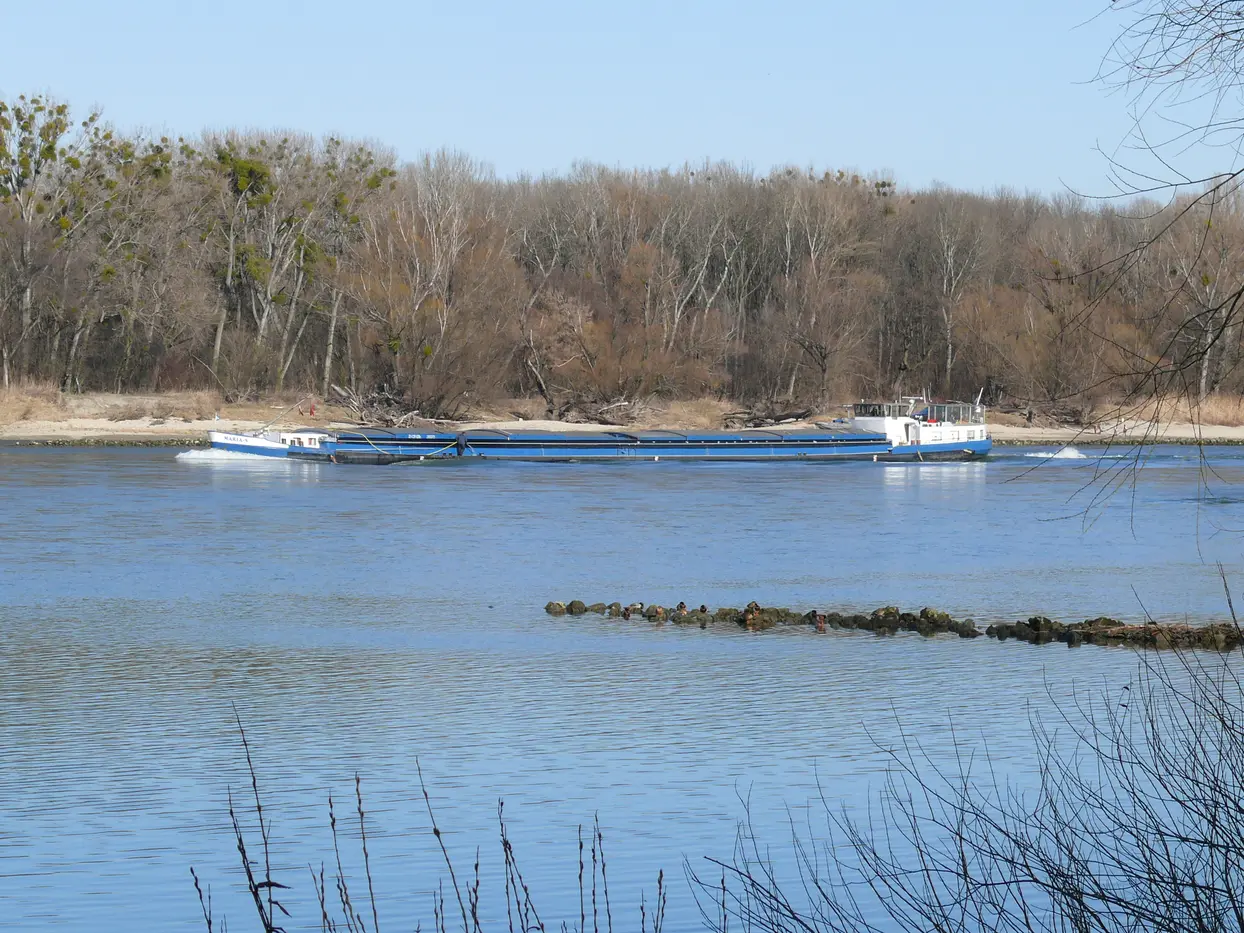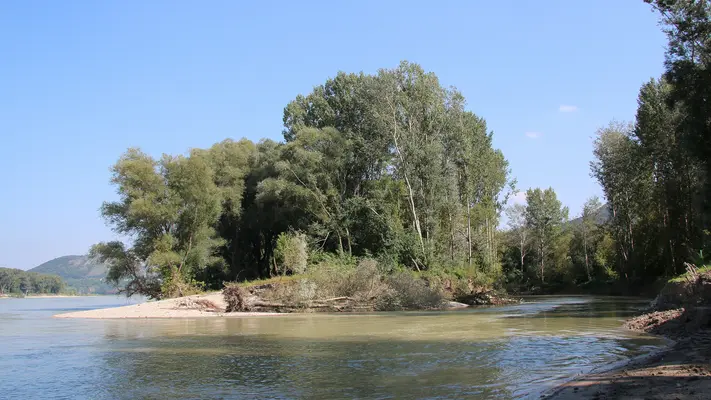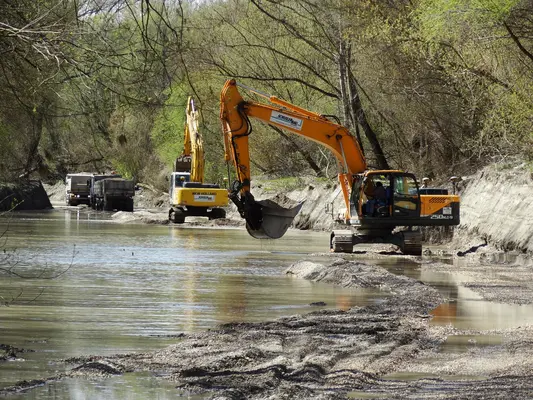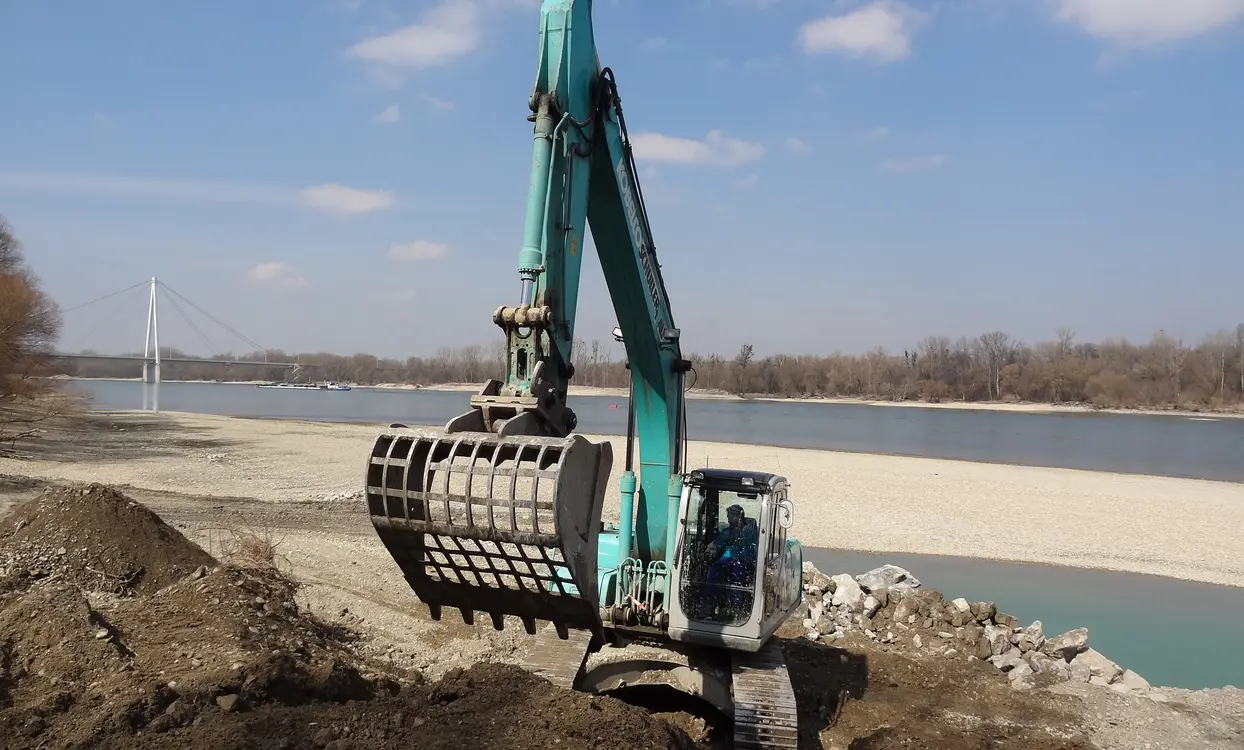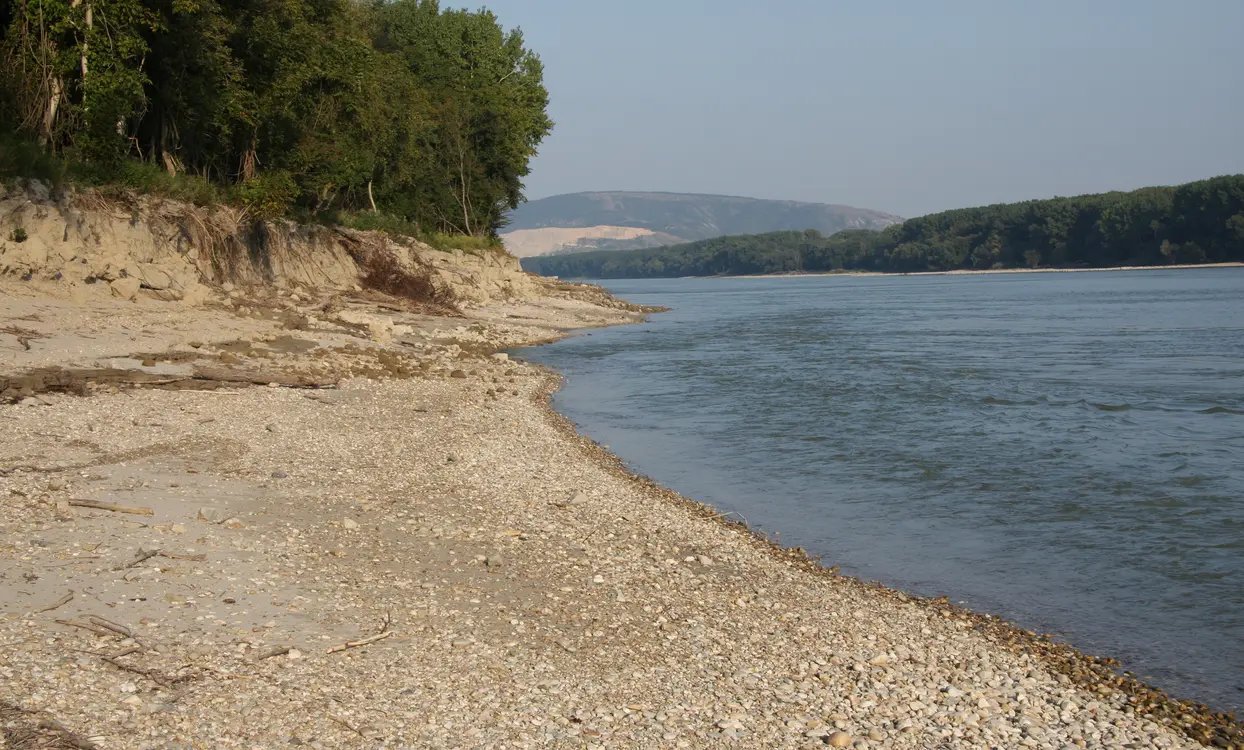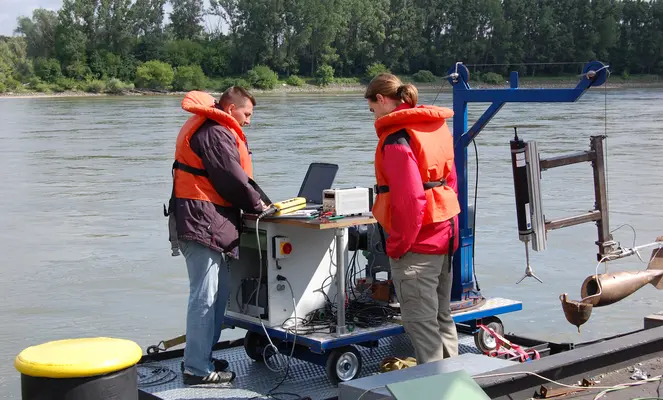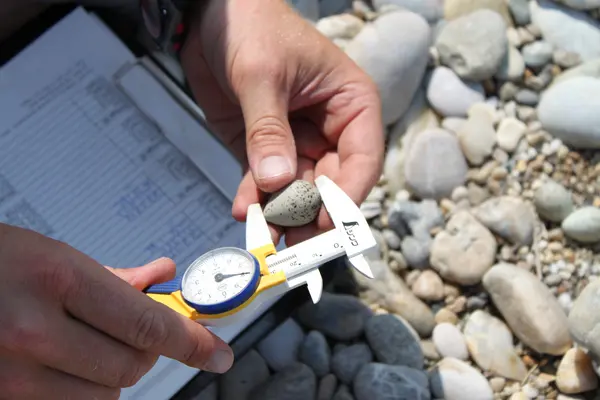Equal development ojectives
The following development targets are being pursued on the Danube east of Vienna, within the framework of the Catalogue of Measures:
- Stabilisation of surface and ground water levels
Over the last 50 years, the mean level of the Danube’s riverbed has fallen by about one meter. This has also affected water levels and it is therefore of great importance that any further erosion of the riverbed (vertical erosion) is prevented. For this reason, the stabilisation of the Danube's average water level is a major priority. - Maintainence and improvement of Danube floodplain habitats
Extensive river restoration measures are creating new habitats for plants and animals and are of great benefit to the valuable existing structures that are typically found in the Donau-Auen National Park. Such measures also contribute to maintaining 'good ecological status' in accordance with the Water Framework Directive (2000/60/EC). Renaturation measures such as cross-sectional channel widenings and discharge distribution provide the river with more space. This relieves pressure from the riverbed in the main channel and counteracts riverbed erosion. The resulting improved retention effect on the Danube wetlands also contributes to constructive flood protection. - Improvement of waterway infrastructure
Economical and safe waterway conditions also need to be ensured during low water conditions. This is primarily achieved by maintaining the required minimum waterway conditions according to the international AGN agreement for the fairway ratified by Austria (2.50 metres loaded draft on at least 300 days per year or 2.50 metres fairway depth at Low Navigation Water Level (LNWL).
These three development objectives are considered to be of equal importance and are consistent with the objectives of the “Danube Action Programme initiated by bmvit and set to run until 2022” and the “Danube Action Programme 2030”. Fundamental ancillary conditions are that the free-flowing character of the Danube east of Vienna, along with flood protection measures, must not be adversely affected. This complex target system is a challenge that can only be met by incorporating different interests and the integrative planning of river engineering measures.
Integrative measures
The development objectives described are achieved by a combination of river engineering measures. The Catalogue of Measures contains both procedures of everyday business operations (maintenance activities) as well as river engineering optimisation projects:
- Integrative bedload management
Gravel, which is dredged in the course of maintenance measures of the shipping channel or from bedload traps, is transported as far upstream as possible, where it is dumped in deep areas of the riverbed (bedload redistribution). The additional deposit of coarse grit can be a further element of bedload management. It is of primary importance that this natural abrasion (grinding of the stones) is compensated for. viadonau’s maintenance measures, along with the efforts of Verbund AG, ensure stable water levels over the entire section of the river and are fundamental to maintaining safe underwater conditions for the Freudenau power plant on the first kilometers of the Danube east of Vienna.
- Optimisation of regulating structures
In order to ensure navigability also during low water periods and to reduce the operating costs of waterway infrastructure, low water regulation structures (groynes, training structures) are improved in critical ford areas. In areas of erosion, regulating measures can be moderately reduced by widening the channel to relieve pressure on the riverbed, thereby stabilising the water level.
- Safeguarding critical areas of riverbed erosion
The protection of local critical points prevents riverbed breakthrough or a complete removal of gravel from the riverbed. Possible safeguarding measures include above others the dumping of gravel or coarse gravel, local fortification with riprap, adaptation of existing regulating structures.
- Side-arm reconnection
Side-arms are the veins of the water forest and have unfortunately become a rare type of habitat. Large historical side-arm systems in the Donau-Auen National Park are therefore being reconnected. The aim is to achieve long-term sustainable throughflow. By discharging water from the Danube, stress inflicted on the riverbed in the main channel is reduced and the tendency of erosion decreases. In addition, discharge distribution can also contribute to lowering flood water levels in some areas.
- Riverbank restoration
The aim of riverbank restoration projects is to develop natural riverbank structures that encourage the creation of new habitats. As a result rivers gain more space, thereby demands on the riverbed are reduced and water levels are lower during high water periods. When removing hard riverbank structures along the main stream, any possible effects on flood protection, navigation, settlement areas and technical infrastructure are all taken into consideration.
- Other measures
The interface between waterway management and traffic management is being further developed in order to make the best use of modern information technologies. Safety facilities, such as emergency landings, are being improved. Scientific accompaniment of these measures, such as by the Christian Doppler Research Laboratories for Sediment Research and Management (SED) and for Aquatic Biotics (MERI), ensure "learning from the river".
The Catalogue of Measures is the result of an integrative planning process and is based on the findings of optimised waterway and traffic management, along with the multi-year conceptual pilot project phase of the Integrated River Engineering Project for the Danube East of Vienna. A priority ranking system has been established for each of the aforementioned types of measures.
The measures listed in the catalogue ensure the flexibility required to incorporate new findings and current developments into the implementation process.
Optimisation projects are implemented step by step according to their priority, thereby making continuous development from project to project possible. Ongoing status assessment, along with monitoring and scientific support is necessary for successful planning and monitoring. This is also the basic prerequisite for taking the lessons learned from the implementation of measures into account in the next steps ("learning from the river"). This is how the experts learn step by step from the river and its many different conditions.
The integration of various interest groups plays an important part in developing and implementing socially and environmentally sound solutions.
